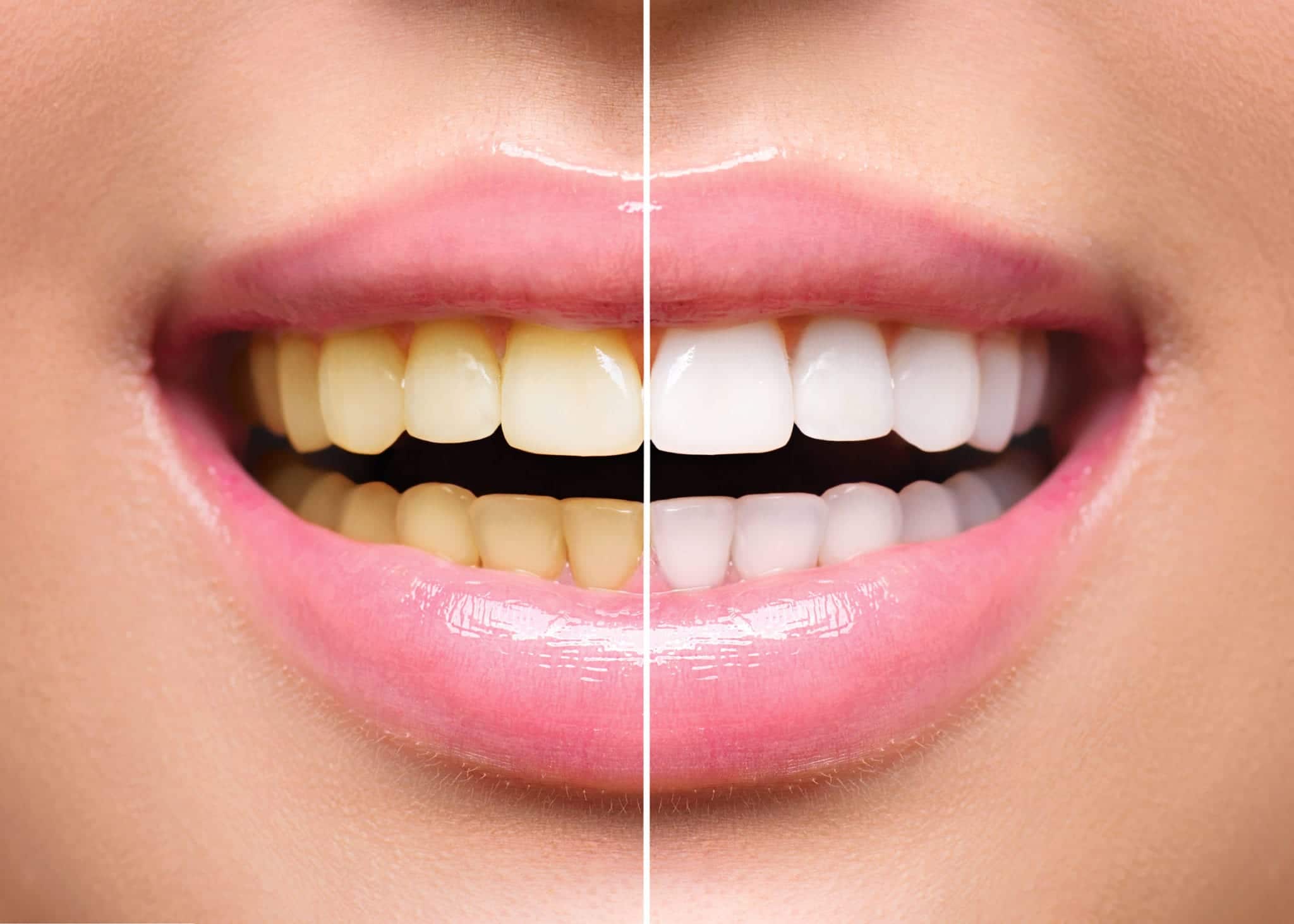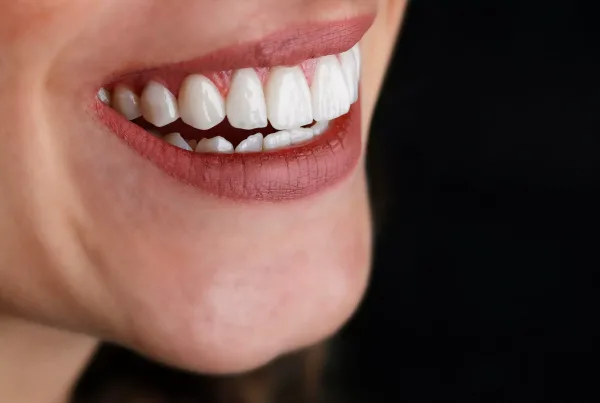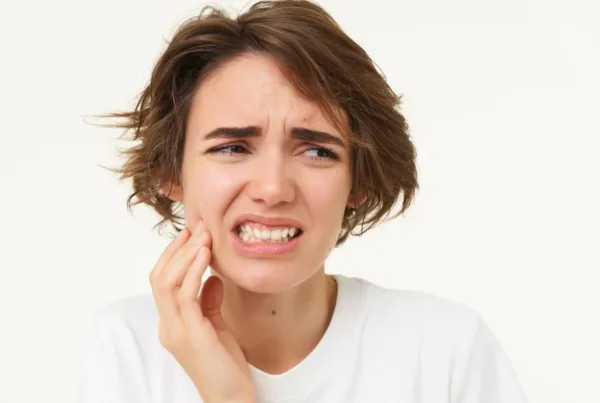
Our teeth are an essential part of our smile. A healthy smile is often associated with white and bright teeth. However, over time, various factors can lead to changes in the color of your teeth. Tooth discoloration or staining can be bothersome for many people. But don’t worry; many options are available to address this issue.
What Does Tooth Discoloration Mean?
Tooth discoloration or staining refers to the loss of the natural whiteness of the teeth and the appearance of different shades of color. This condition may raise aesthetic concerns and indicate potential health problems in some cases. Therefore, any changes in tooth color should be taken seriously, and necessary measures should be taken.
Types of Tooth Discoloration
Tooth discoloration can occur due to various factors related to surface-level or intrinsic factors. These types of discoloration can stem from changes in the physical structure of the teeth or from stains caused by external influences.
- Surface Staining: Surface staining refers to stains on the outer surface of the teeth. This type of discoloration is often caused by the accumulation of plaque or tartar on the enamel, the consumption of colored foods and drinks, or smoking. Frequent consumption of beverages like coffee, tea, and red wine can lead to yellow or brown stains on the teeth over time.
- Intrinsic Discoloration: Intrinsic discoloration occurs inside the tooth. It can result from changes in the dentin layer or within the canals inside the tooth. Intrinsic discoloration may occur due to factors like aging, trauma, excessive fluoride intake, or the use of certain antibiotics. In this case, the color change is deeper and may be difficult to remove with surface treatments.
Both types of discoloration can signal aesthetic concerns as well as potential health issues.
Causes of Tooth Discoloration
Changes in tooth color can be caused by various intrinsic and extrinsic factors. These factors can lead to the loss of the teeth’s natural whiteness and the appearance of different shades. Some causes can be prevented, while others may be beyond control.
Preventable Causes:
- Poor Oral Hygiene: Inadequate brushing and lack of flossing can lead to plaque buildup, which can cause discoloration.
- Smoking: Smoking can cause yellow or brown stains on the teeth.
- Colored Foods and Drinks: Excessive consumption of colored drinks like coffee, tea, and red wine can lead to discoloration.
- Fluoride Intake: Excessive fluoride intake can cause enamel erosion and the formation of white spots.
Unpreventable Causes:
- Aging: As people age, enamel wears down, and teeth naturally become more yellow.
- Genetic Factors: Some individuals naturally have teeth that are whiter or more yellow due to genetic factors.
- Trauma: Internal bleeding or cracks in the teeth caused by trauma can lead to discoloration.
- Medical Conditions: Some medications can cause tooth discoloration. For example, certain antibiotics or treatments like chemotherapy can lead to staining.
Understanding the causes can help in taking preventive measures.
Meanings of Different Tooth Stain Colors
The color of stains on your teeth can provide information about the cause and type of discoloration. Stains of different colors can result from various intrinsic or extrinsic factors and may indicate different health conditions.
- Yellow Stains: Yellowish stains may result from smoking, excessive consumption of caffeinated drinks, or poor oral hygiene. These stains can appear as plaque buildup on the enamel or surface stains on the teeth.
- Brown Stains: Brown stains can result from excessive consumption of colored drinks like coffee and tea or poor oral hygiene. They can also occur as a result of the progression of tooth decay.
- Purple Stains: Purple stains on the teeth often result from internal bleeding or trauma. These stains may indicate changes in the inner structure of the tooth.
- Gray Stains: Gray stains may indicate severe conditions such as internal bleeding caused by trauma or the death of the nerves inside the tooth.
- White Stains: White stains may occur due to excessive fluoride consumption or weakening of the enamel. These stains can signify mineral loss in the enamel and may make teeth more prone to decay.
- Black Stains: Black stains may result from tooth decay or discoloration of metal fillings. These stains can indicate the progression of tooth decay and are a sign of a serious dental health issue.
Each stain color can have different meanings regarding dental health and may require appropriate treatment. Therefore, it is recommended to seek professional advice from a dentist to understand the color and cause of stains on your teeth.
Home Remedies to Remove or Prevent Tooth Stains
Good oral hygiene and healthy lifestyle habits can prevent or reduce tooth stains. Brushing your teeth properly with a toothbrush and toothpaste twice a day, in the morning and before bed, is essential. During brushing, clean all tooth surfaces, the back of your tongue, and your gums.
Using dental floss to clean between the teeth and remove plaque buildup is an effective method for preventing tooth stains. Regular use of dental floss can help maintain cleanliness between the teeth. Supporting your oral hygiene routine with mouthwash can also help prevent tooth stains.
Excessive consumption of colored drinks like coffee, tea, and cola can lead to staining. You can protect your teeth by reducing the intake of such beverages or using a straw. A balanced and healthy diet plays an important role in maintaining dental health. With a balanced diet, you can strengthen your teeth and gums.
Regular dental check-ups can help detect and treat tooth stains early. Make sure to schedule regular appointments for periodic check-ups with your dentist. These simple steps you can take at home can help prevent tooth stains and reduce existing stains.
When Should You Visit a Dentist?
Dental health is an important part of overall health, and it may be necessary to visit a dentist immediately in certain situations.
- Pain or Discomfort: If you notice pain, sensitivity, swelling, or other discomforts in your teeth, these symptoms may require an urgent visit to the dentist. These could be signs of tooth decay, gum disease, or other serious dental issues.
- Tooth Trauma: If you experience fractures, cracks, or discoloration due to trauma, it is important to see a dentist immediately. Early intervention after trauma is crucial for preserving the health of your teeth and preventing permanent damage.
- Abnormal Color Changes: If you notice abnormal color changes in your teeth, especially if they appear suddenly or progress rapidly, you should see a dentist.
Addressing concerns early or starting treatment at the first signs during regular check-ups can eliminate many potential risks.
Treatment Options for Removing Tooth Stains
Tooth stains can be aesthetically bothersome, and various treatment options are available to address this issue. Some standard treatment methods for removing tooth stains include:
- Teeth Whitening (Bleaching): Teeth whitening is a standard treatment method used to remove stains and achieve a whiter appearance. Professional teeth whitening performed by a dentist involves using a potent cleaning agent or a special light source. Home teeth whitening kits are also available, but professional treatment by a dentist often yields more effective results.
- Bonding: Bonding is a cosmetic treatment method that involves applying a composite resin to the surface of the teeth to correct discoloration or conceal stains. The dentist applies color-matching composite resin to improve the shape and color of the tooth. This method is quick and requires minimal intervention.
- Veneers: Veneers are thin, custom-made porcelain or composite coverings placed on the front surface of teeth. They can conceal discoloration, cover cracks or fractures, and improve the shape and size of the teeth. This method is an effective option for enhancing the natural appearance of teeth.
- Other Aesthetic Treatments: There are different aesthetic treatments available for removing tooth stains, such as microabrasion, laser teeth whitening, or dental veneers. The appropriate treatment option depends on the teeth’ condition, the stain’s cause, and the patient’s preferences.
Consult your dentist to determine the most suitable treatment option for removing tooth stains. Your dentist will evaluate your condition and





